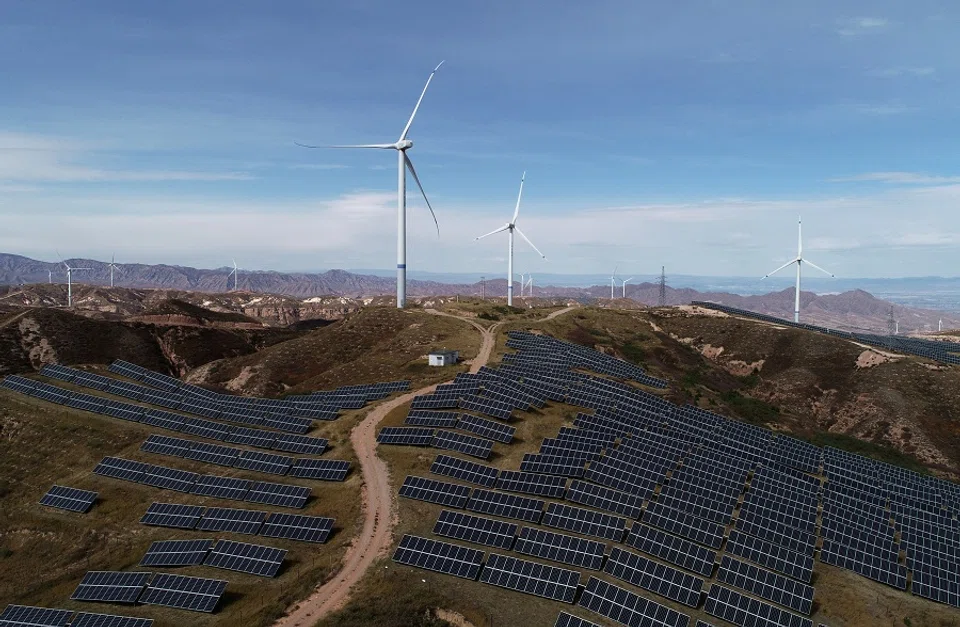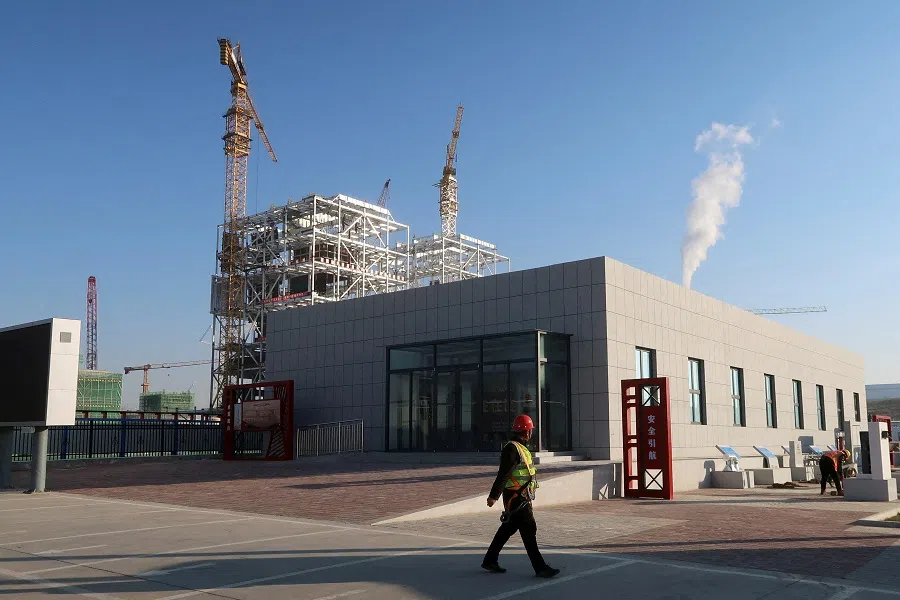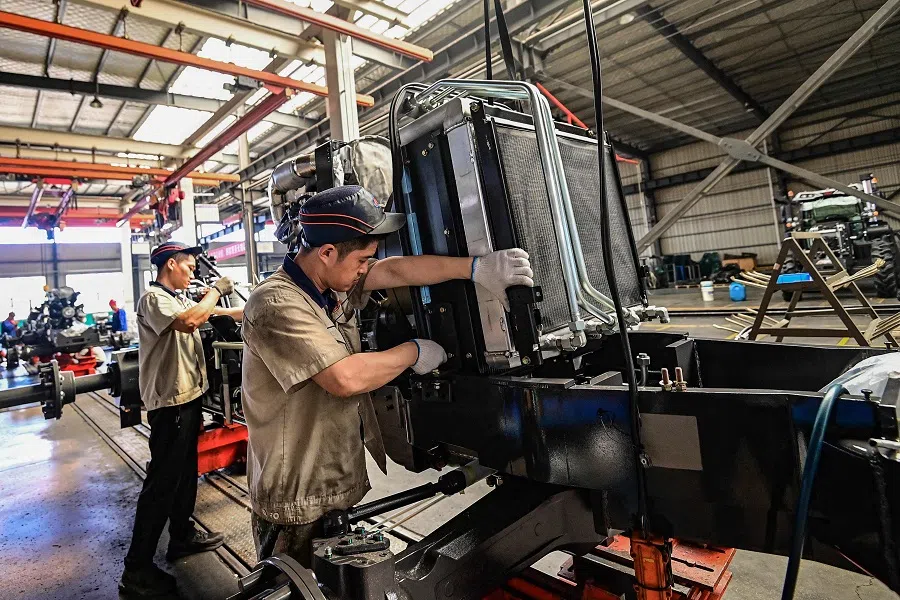From coal to kilowatts: Is China turning a corner on carbon?
China’s modest emissions decline in early 2025 marks a symbolic turning point, says researcher Genevieve Donnellon-May. This could mean that the country may be starting to decouple emissions from economic growth, raising the prospect of an earlier-than-expected emissions peak ahead of 2030.

Will China peak emissions before 2030 — or peak expectations?
As the world’s largest energy consumer and importer, China sits at the heart of global climate efforts.
Recent research from Carbon Brief showed that in early 2025, the country’s carbon dioxide emissions fell by 1.6% year-on-year — and by 1% over the past 12 months — despite a 2.5% rise in electricity demand. These figures, official and commercial data, mark a rare instance where emissions declined due to clean energy supply outpacing demand growth rather than an economic slowdown.
China’s energy consumption and climate commitments
China accounts for more than one-third of global electricity consumption and over 30% of the world’s total emissions. Its vast energy appetite is driven in part by industrial output, urbanisation and a growing middle class.
Fossil fuels still dominate, providing 62% of China’s electricity in 2024. The share of coal generation has steadily declined — from nearly 80% in the mid-2000s to 54.8% in 2024. Clean power made up 38% of China’s electricity mix in 2024, just below the global average of 41%. Hydropower remains China’s largest source of clean electricity, contributing 13% of total output last year. Combined, wind and solar contributed 18% of total generation.
Backing these pledges are massive investments in clean technologies. Last year alone, China invested 6.8 trillion RMB (US$940 billion) in clean energy.
China’s evolving energy mix and surging renewable energy deployment is closely tied to its broader climate strategy. Faced with intensifying climate impacts — such as prolonged droughts that have reduced hydropower capacity and inflicted billions in economic losses — Chinese President Xi Jinping has declared China’s dual pledge: to peak carbon emissions by 2030 and reach carbon neutrality by 2060.

Policy commitments underpin this momentum. The current 14th Five-Year Plan (2021–2025) set a 20% target for non-fossil fuels in primary energy consumption and 39% share in generation. In a speech at the Leaders Meeting on Climate and the Just Transition in April, President Xi declared, “Green transformation is not only the essential way to address climate change, but also a new engine for economic and social development.”
Backing these pledges are massive investments in clean technologies. Last year alone, China invested 6.8 trillion RMB (US$940 billion) in clean energy. In the same year, 278 gigawatt (GW) of new solar capacity and wind (79.8 GW) capacity was added helping China surpass 1,400 GW of total renewable capacity, six years ahead of its 2030 target.
... that the country may be starting to decouple emissions from economic growth, raising the prospect of an earlier-than-expected emissions peak ahead of 2030.
China now generates over 3,300 TWh of clean electricity annually — more than enough to power India, the world’s third-largest electricity consumer.
Understanding the emissions dip
China’s modest emissions decline in early 2025 marks a symbolic turning point amid a complex policy and geopolitical landscape. It suggests that the country may be starting to decouple emissions from economic growth, raising the prospect of an earlier-than-expected emissions peak ahead of 2030. The timing aligns with preparations for a new nationally determined contribution (NDC) under the Paris Agreement, which all signatories, including China, are expected to submit in early 2025. These updated pledges are expected to include enhanced 2030 targets and new 2035 commitments.
... a coal-heavy stimulus amid economic slowdown or short-term rebound could erase recent gains.

More broadly, this shift demonstrates that climate action need not come at the expense of economic stability. With an approximate 5% GDP growth target still in place, China is showing emissions reductions can align with national priorities, linking clean energy expansion to industrial policy and global competitiveness. For Beijing, the implications are twofold: domestically, it validates the state-led green transition; internationally, it strengthens China’s position as a leading climate actor, particularly within the global south.
Nonetheless, China’s emissions trajectory remains shaped by structural constraints and hard trade-offs. While clean energy advances long-term climate goals, emissions currently remain just 1% below their previous peak. This narrow margin highlights the fragility of progress — a coal-heavy stimulus amid economic slowdown or short-term rebound could erase recent gains.
Furthermore, coal remains key to China’s energy system. More than half of energy consumption and two-thirds of electricity output come from coal. Recent approvals for new coal-fired plants may signal a hedge — not a retreat — aimed at maintaining grid stability and industrial continuity amid growing geopolitical and economic uncertainty. Last year, China was responsible for 74% of global coal generation and 95% of the world’s new coal power construction activity in 2023.
Beijing’s energy security calculus
Two key factors shape Beijing’s renewable energy policies. The first factor is energy reliability, which is central to the Chinese central government’s policy calculus. Seasonal variability in renewables, particularly solar and hydropower, makes fossil fuels an indispensable backstop. The energy supply crisis in late 2021 — which affected 20 provinces and curtailed industrial activity — exposed vulnerabilities in over-relying on volatile fuel imports and weather-dependent renewables. Beijing responded by investing in a new wave of coal-fired power stations to try to meet demand. In the first quarter of 2022 alone, China approved 8.63 gigawatts of new coal plants. Following this, in May 2022 it announced a 10 billion RMB of investment in coal power generation. In 2024, the country held over half of the world’s total operating coal capacity
The second factor is Beijing’s enduring concern over the “Malacca Dilemma” — its reliance on the narrow Strait of Malacca for around 80% of its oil imports...

The second factor is Beijing’s enduring concern over the “Malacca Dilemma” — its reliance on the narrow Strait of Malacca for around 80% of its oil imports — continues to influence energy planning. In response, China has expanded overland corridors to reduce maritime dependency and also diversified suppliers. This strategic anxiety accelerates domestic clean energy investments, which serve dual purposes: cutting emissions and providing insulation against external vulnerabilities.
Climate diplomacy and strategic positioning
China’s recent emissions dip coincides with a critical juncture in global diplomacy. A temporary easing of tensions — including a 90-day pause for most tariffs on each other’s goods in the US-China tit-for-tat trade spat and a telephone call in early June between President Xi and US President Donald Trump followed by further talks in London — has created limited space for dialogue, including on climate. However, formal cooperation remains constrained by mutual suspicion and diverging domestic agendas.
Meanwhile, China plays an outsized role in the global energy landscape and clean energy transition. In 2024, the country accounted for 54% of global growth in wind and solar generation. It also dominates solar manufacturing, holding over 80% of the global market share.
... China is helping provide low-carbon infrastructure, technical support, and financial assistance to developing countries to address climate change concerns, while also bolstering Beijing’s soft power abroad.
For the Chinese central government, climate diplomacy is both an opportunity and a strategic tool. With the US pulling back from global clean energy leadership under a second Trump administration — including withdrawing from the Paris Agreement earlier this year — China could cement itself as the champion of the global south and the region’s climate interests.

Recent engagements with Latin America and the African Union alongside last month’s trilateral ASEAN-GCC-China Summit highlight Beijing’s integration of climate cooperation and renewable energy into its broader foreign policy. Through mechanisms such as the Belt and Road Initiative International Green Development Coalition and the South-South Climate Cooperation Fund, China is helping provide low-carbon infrastructure, technical support, and financial assistance to developing countries to address climate change concerns, while also bolstering Beijing’s soft power abroad.
China’s early 2025 emissions dip offers more than a symbolic milestone. It signals that clean growth is possible — and that Beijing’s green transition is gaining traction. With COP30 in Brazil on the horizon, this momentum can be strengthened through targeted reforms. In a shifting global landscape, China has an opportunity to lead not just through scale, but through credibility.





